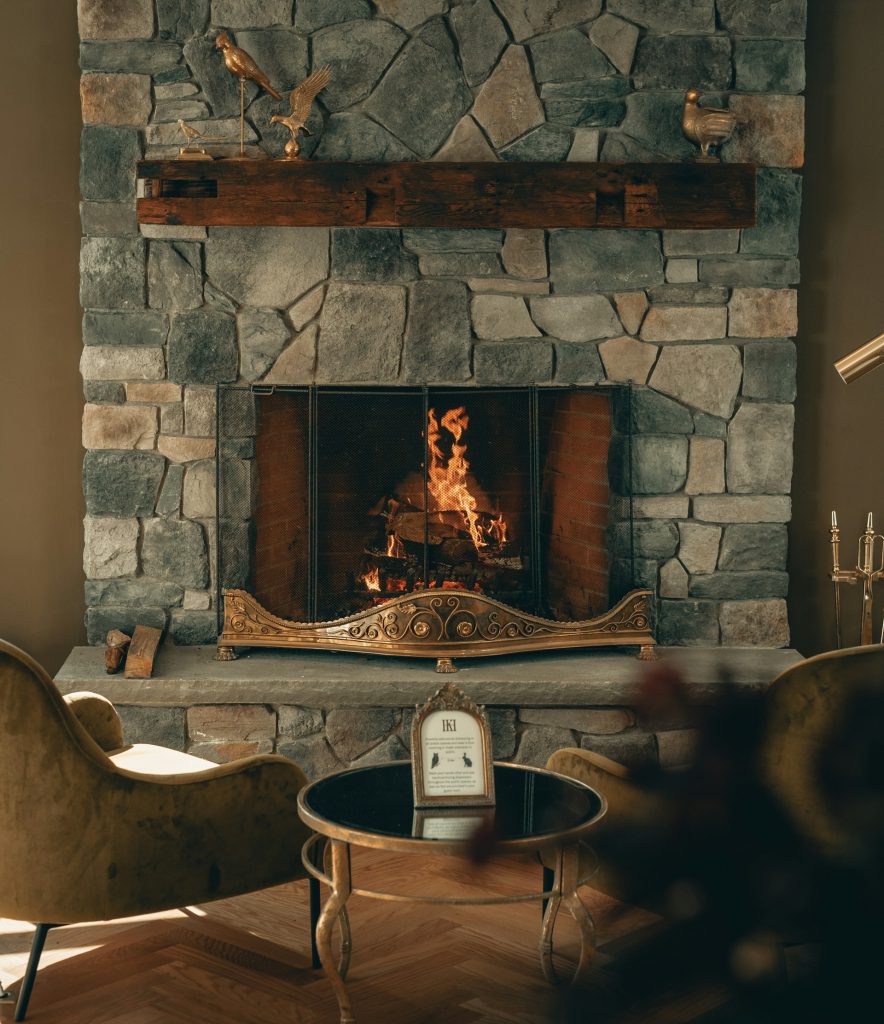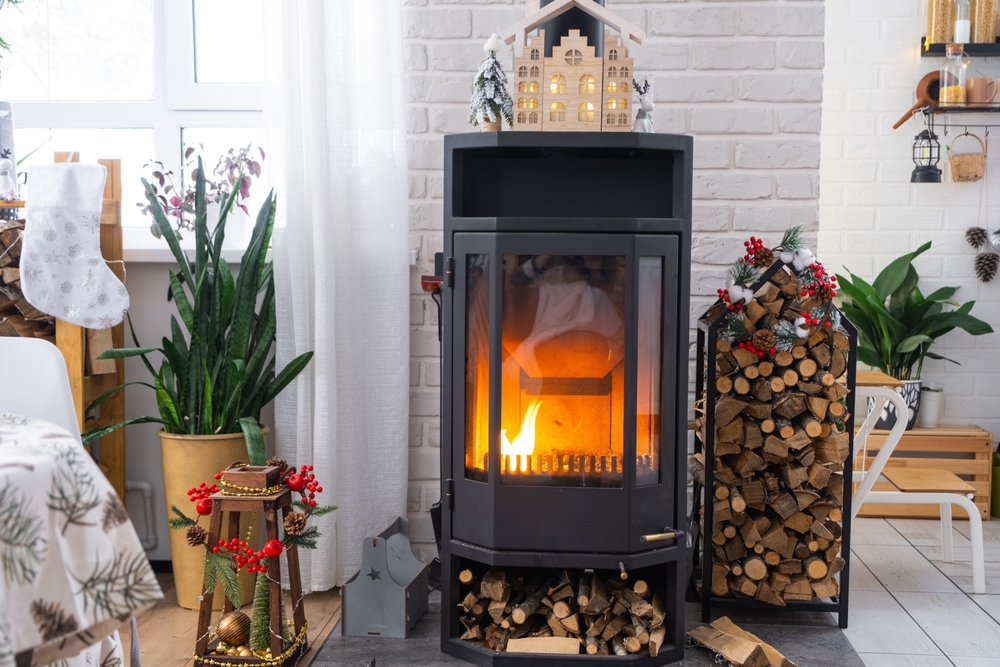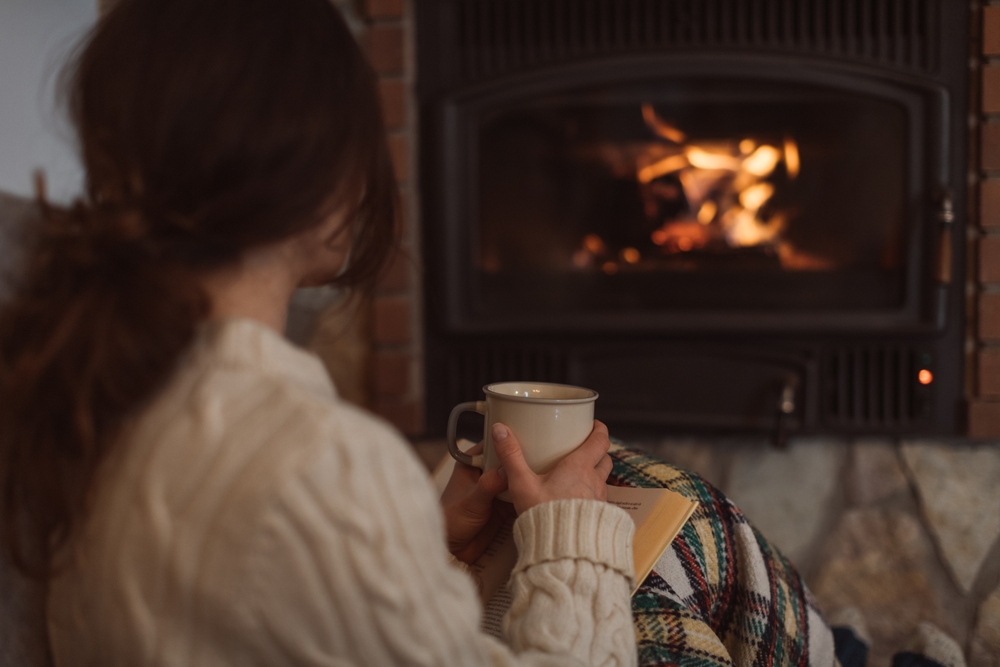If you’re thinking of installing a wood burning stove in your home and already have a traditional fireplace, it might seem like a simple job. After all, the chimney’s already there, just pop in a stove and you’re done, right?
Not quite. In reality, most older chimneys in UK homes weren’t built with modern stoves in mind. While they might have been suitable for open fires decades ago, today they often fall short in terms of safety, performance, and compliance with current building regulations.
That’s where a flue liner becomes not just helpful — but essential. In this guide, we’ll walk you through why relining your chimney flue is often the smartest (and most legally sound) choice when upgrading to a wood burning stove.
Why Old Chimneys Often Aren’t Enough
Many period homes in the UK were built with large, unlined brick chimneys designed to vent open coal fires. These flues were typically wide, porous, and not properly insulated, and they weren’t built to handle the higher temperatures and concentrated exhaust gases produced by modern wood burners.
Common issues with old chimney flues include:
- Cracks or gaps in the masonry
- Oversized flue dimensions causing poor draw
- Residual soot or creosote from previous use
- Moisture penetration and internal corrosion
Trying to run a stove through an unlined, deteriorated chimney flue can lead to:
- Poor stove performance (difficulty lighting or maintaining fire)
- Excessive smoke and backdrafts
- Condensation and acidic damage inside the flue
- Carbon monoxide leakage into the home
- Increased fire risk from creosote build-up
What a Flue Liner Actually Does
A flue liner is a protective conduit installed inside your existing chimney. Usually made of flexible stainless steel (though rigid liners and clay options exist), it creates a sealed, properly-sized passage for smoke and gases to exit your home safely.

Here’s why installing a flue liner is so important:
- Improved efficiency – A correctly sized liner enhances draft, helping your stove burn cleaner and more efficiently.
- Better safety – It prevents smoke, fumes, and carbon monoxide from leaking through damaged brickwork.
- Moisture control – Liners reduce condensation that can damage both the chimney and stove.
- Fire prevention – By containing soot and gases, liners reduce the risk of chimney fires.
- Compliance – Flue liners help meet the requirements of UK Building Regulations (Part J).
Is a Flue Liner Legally Required in the UK?
There’s no single law that says every stove must have a flue liner — but in practice, most installations require one to comply with safety and performance standards.
According to Approved Document J of the Building Regulations:
- All flues must be “suitable for the appliance and the type of fuel used.”
- They must also be “resistant to heat and corrosion,” and must safely contain and discharge the products of combustion.
- If the existing flue doesn’t meet those standards — and most old chimneys don’t — it must be relined.
If your stove is being installed by a HETAS-registered installer, they’ll assess the chimney and determine whether a liner is needed. In nearly all retrofit cases, the answer will be yes.
Also note: insurance companies may refuse to pay out for any damage caused by an improperly installed or unlined flue, especially if it leads to fire or carbon monoxide poisoning.
How Is a Flue Liner Installed?
The good news is that installing a flue liner into an existing chimney is usually straightforward — especially when compared to building an entirely new chimney flue system. That said, it’s still a job for professionals if you want it done safely and in line with regulations.
Here’s a general outline of the process:
- Chimney inspection
A qualified installer will first check the condition of your existing chimney. This often includes a CCTV inspection to spot cracks, old mortar, or blockages. Any debris or creosote build-up is cleaned out beforehand. - Selecting the correct liner
The installer will choose a flue liner with the appropriate diameter for your stove — typically between 5″ and 6″ (125–150mm). Too narrow, and the stove won’t draw properly. Too wide, and the gases will cool too quickly, causing condensation and creosote formation. - Installing the liner
Most liners are fed from the top of the chimney downward, using a winch or weighted rope. The liner is then connected to a stove connector or register plate at the bottom, sealed with fire cement, and fixed securely at the top using a pot hanger and terminal. - Insulation (optional but recommended)
In some cases, especially with larger or external chimneys, insulation is added around the liner to keep flue gases hotter. This improves draft and reduces condensation. - Certification and sign-off
Once installed, the system must be tested (usually with a smoke test) and signed off. A HETAS engineer will issue a certificate of compliance, which is important for insurance and resale purposes.

Types of Flue Liners Available in the UK
There are several types of chimney liners available, but for most domestic wood burner installations, a flexible stainless steel liner is the go-to solution. Here’s a quick overview:
Flexible stainless steel liners
- Most common for relining existing chimneys
- Easy to install and available in twin- or single-skin formats
- Twin-skin is recommended for solid fuel and wood burning stoves (usually Grade 316 or 904 steel)
Rigid liners or clay liners
- Often used in new build chimney flues
- More expensive and complex to install
- Excellent longevity but less flexible for retrofit applications
Pumice or ceramic liners
- Usually part of a new chimney system, not for relining
- Provide excellent insulation and long-term durability
- Rarely used in UK renovations due to cost and complexity
Common Mistakes to Avoid When Relining a Chimney
Even with the best intentions, chimney flue upgrades can go wrong if you’re not careful. Watch out for these common pitfalls:
- Choosing the wrong liner size
Undersized liners will cause backdraft issues, while oversized ones may cool the gases too quickly and cause creosote build-up. - Skipping insulation in cold chimneys
Uninsulated liners in external walls or tall chimneys are prone to condensation and poor draft. Insulating wrap or vermiculite backfill can help. - Using single-skin liners for wood burners
These are only suitable for gas or oil appliances — never for wood or multi-fuel stoves. - Not sealing gaps or fitting the liner securely
Loose fittings can allow smoke or gases to leak into the property — a major safety hazard. - DIY without proper certification
Always have the installation certified by a HETAS installer or through your local building control. Without this, you may struggle with home insurance or when selling the property.

What Does It Cost to Install a Flue Liner in the UK?
Prices can vary depending on the chimney height, access, and type of liner used, but here’s a rough guide:
- Flue liner (flexible twin-wall stainless steel): £300–£600
- Labour and installation: £400–£800
- Register plate, pot hanger, and fittings: £100–£200
- Optional insulation or chimney pot work: £150–£300
Total estimated cost: £800–£1,500, depending on complexity. While it’s a serious investment, the safety, performance, and regulatory compliance it provides are more than worth it.
Final Thoughts
If you’re upgrading your fireplace to a wood burning stove in a UK home with an existing chimney, installing a flue liner isn’t just a box-ticking exercise — it’s central to safety, efficiency, and legal compliance. An unlined or poorly maintained chimney flue can be a hidden hazard, but a well-installed liner transforms it into a modern, high-performing ventilation system that’s ready for years of cosy, clean burning.
Relining your chimney gives you peace of mind, ensures your stove operates as it should, and helps you stay on the right side of UK Building Regulations. So whether you’re renovating a Victorian terrace or converting a country cottage, don’t skip the liner — it’s the backbone of your stove system.





